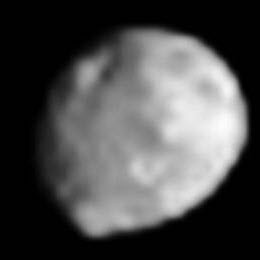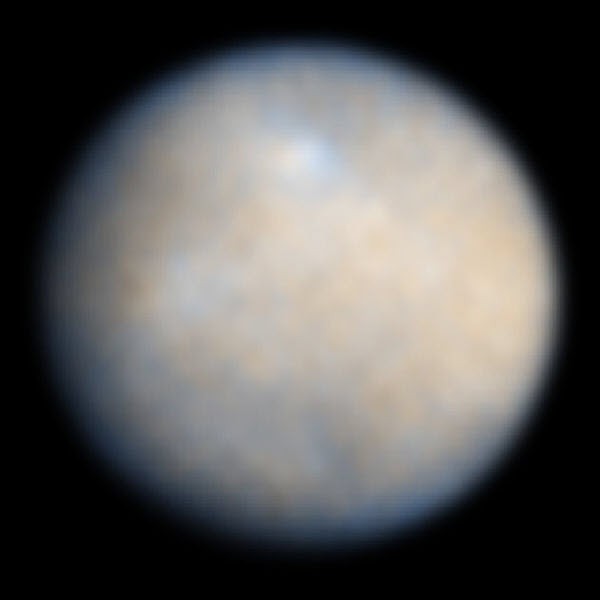Far away from the euro crisis, Boganville and rogue attacks by volcanic ash clouds, a new world, Vesta, is coming into focus in the cameras of a tiny, internationally supported US spacecraft called Dawn.
Vesta is the second largest object in the main asteroid belt between Mars and Jupiter.
Shaped like a well-kicked football, but as wide as 578 kilometres, Vesta has never been “seen” in surface detail, but craters, vast fields of bright soil and lumpy mountains are now becoming more apparent by the day as Dawn draws nearer.

Vesta
By mid-July Dawn’s ion engine, a much slower but more precise propulsion system than rocket engines, will have nudged it into a spiraling orbit, which, over many months, will drift the spacecraft so close to Vesta’s surface it will be able to see small rocks as it skims across its features.
Then, about a year later, Dawn’s controllers will direct its tiny stream of energetic ions to push it free of Vesta’s weak gravitational pull and cruise it to Ceres, a true dwarf planet that looks a bit like Mars in the blurry best images of it taken by the Hubble Space Telescope.

Ceres
Ceres appears to be perfectly circular with a diameter of 950 kilometres, and rusty-tinted with icy coloured patches, or in other words, totally unlike any of the 100,000-plus rock piles known to orbit inside the main asteroid belt, including thousands that are as big as large mountains or whole cities.
It is calculated to contain more than one third of the total mass of the objects in the asteroid swarm, even though it may not be an asteroid at all, but something more like Pluto or the dozens of other dwarf planets that reside in the outer reaches of the solar system.
What Ceres is, and why is it there, are the main questions Dawn is intended to address. For a long time, Ceres has been assumed to be the largest chunk of a proto planet that was never able to fully form because of disruption by the gravitational field of Jupiter when the solar system was in its infancy.
Like many assumptions made by earth-bound astronomers in centuries past, this risks being overturned by space craft that can examine what were once tiny points of life and see them as whole worlds, full of amazing and unexpected features that can be inconsistent with earlier conclusions.








It’s life Ben but not as we know it.
http://www.youtube.com/watch?v=HhuzjkE65f8
“Ceres appears to be perfectly circular” – well, yes, but that must be because it is actually perfectly spherical.
Wonderful exposition of the endeavour. It seems to me that the asteroid belt will prove to be more useful/valuable for future space travel than the planets, lots of water ice, minerals, miniscule gravitational problems, I’d happily sign on to live there, one way ticket no probs.
space craft that can examine what were once tiny points of life and... I hope that was a typo. for light otherwise we might be annoying the neighbours.